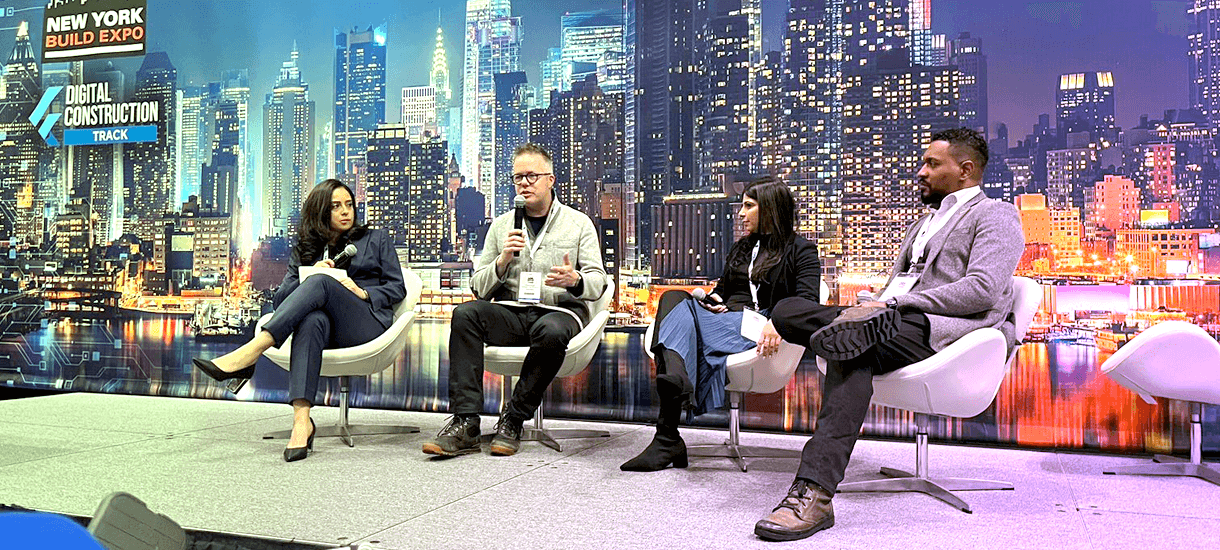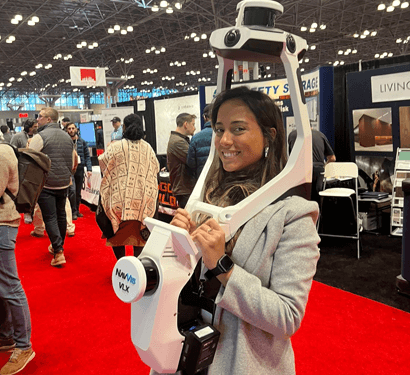Snow did not stop the Javits Center from becoming the epicenter of building and design innovation. With over 400 exhibitors and 500 expert speakers, the expo served as a springboard for 35,000+ AEC professionals shaping the future. Here are our three picks from this event.

The expo wasn't just about showcasing; it tackled key architectural challenges. We immersed ourselves in the latest construction technologies and trends, learning and networking over food and drinks. From biophilic design to sustainability, let’s tell you all you need to know.
1. Biophilic architecture: From a philosophy to a reality
Technological advancements are shaping a new generation with evolving needs and habits. Talks at the Human Experience session stressed the crucial role of design in prioritizing people, even amidst growing automation with AI. Technology is a tool, not a replacement for experience and emotion. Therefore, spaces must deliver comfort, belonging, and a desire to return beyond mere efficiency.
One exciting concept emerged: Biophilic Architecture. It reimagines design, exceeding the simple addition of plants to incorporate natural light, textures, water elements, and improved air circulation, fundamentally enhancing health and well-being. It aims to create spaces that fulfill needs we didn't realize we had, fostering a desire for more.
2. Sustainability: Decarbonization and reuse
The rise of remote work has left many office buildings empty, particularly in major cities like New York, LA or San Francisco. Once bustling hives of activity, these city office buildings now have a vacancy rate of over 50%. In light of this scenario, sustainability experts tackled the question: what's the future of these 'vacant giants'? They offered hope for these buildings through innovative strategies emphasizing both environmental responsibility and human needs.
One promising solution emerged at the expo: repurposing them for residential use. The challenge isn't trivial – architects shared hurdles like zoning regulations, structural modifications, and ensuring access to light and ventilation. Their innovative solution? Horizontally partitioning the building, creating two towers from one while preserving the core structure. This minimizes waste and leverages existing strength. Therefore, for the construction sequencing, while the building's structure is being reinforced, it can continue to be used until the demolition and creation of the internal void and new facade.
Beyond reuse, discussions focused on green building for new projects. Thanks to new technologies and greater public awareness, new materials and construction methods are now being considered for ground-up projects to achieve greater sustainability and decarbonization.
Strategies to reduce human-made greenhouse gas emissions associated with buildings were also discussed. This comprehensive approach includes the entire building lifecycle – from design to demolition.
3. Technology that supports creativity
Human experience remained paramount at the NY Build Expo, with Virtual Design and Reality (VDR) taking center stage. Experts agreed that VDR helps hone human connections and anticipate real-time experiences created by different environments. While concerns exist with any new technology, it allows designers to focus on creativity and avoid repetitive tasks.
World-renowned design and architecture firm HOK, which is responsible for designing the "Stadium of the Future" for the Jacksonville Jaguars, among other projects, discussed how they use Augmented Reality (AR) in stadiums and how this technology can increase revenues by enhancing audience anticipation, by allowing consumers to experience the space in advance.
In addition to discussing the potential of the technology, experts acknowledged the oversupply of tools. As a result, panelists warned that finding the right tool for the job requires a clear understanding of the project's needs and proper team training. Successful projects continue to emphasize the alignment of process, people, and technology from the outset.

From AR and VR to improve the delivery to how vacant office buildings get a second, the expo was a place to discuss where technology will play in the industry. Overall, the East Coast's largest construction show served as a dynamic forum for industry professionals to exchange ideas, insights, and solutions, driving innovation and progress in the ever-evolving construction landscape. Join the innovation movement: Learn how we're partnering with clients to solve project delivery challenges.